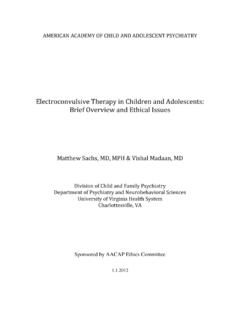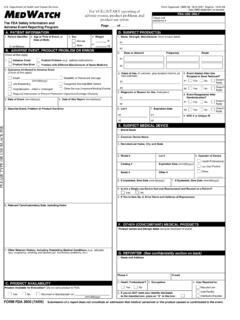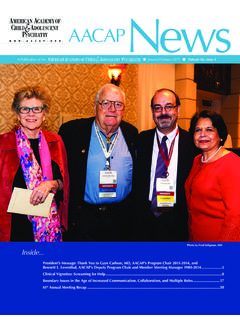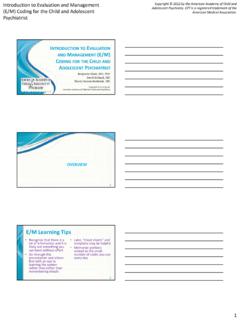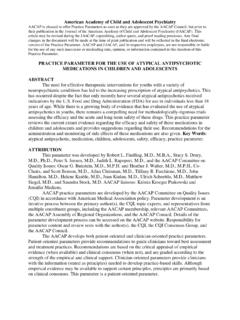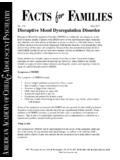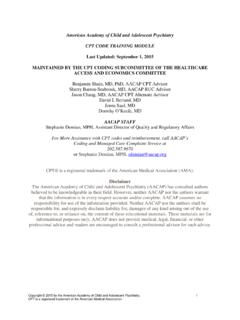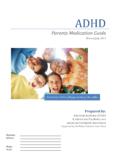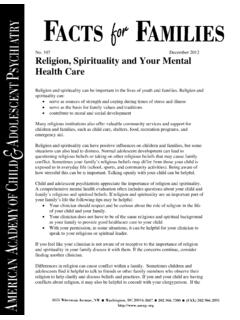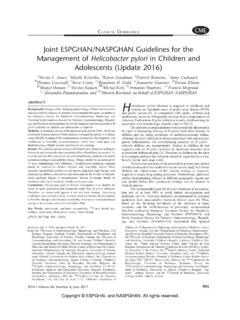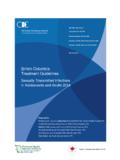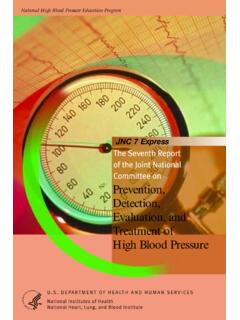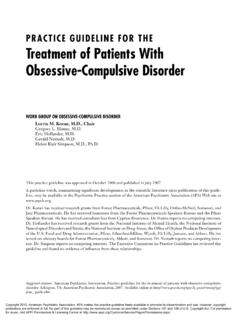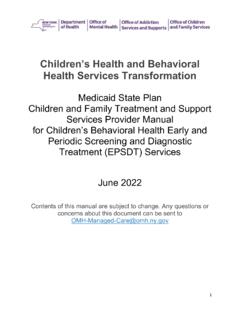Transcription of Principles of Care for Treatment of Children and ...
1 Principles of Care for Treatment of Children and Adolescents with Mental Illnesses in Residential Treatment Centers June 2010 These guidelines were developed by the Work Group on Healthcare Access and Economics: Michael Houston, , co-chair, Harsh Trivedi, , co-chair, Alan Axelson, , Sherry Barron-Seabrook, , David Berland, , Martin Glasser, , Sherry Goldman, , Anthony Jackson, , Lisa Ponfick, , Barry Sarvet, , Robert Schreter, , Benjamin Shain, , , and AAP liaison Lynn Wegner. The Inpatient, Residential, and Partial Hospitalization Committee also reviewed these guidelines .
2 This committee includes Erin Malloy, , chair, Basil Bernstein, , Shashi Bhatia, , Shiraz Butt, , Jane Gaffrey, , Gary J. Gosselin, , Bruce M. Hassuk, , Charles R. Joy, , Kim J. Masters, , Sricharan Moturi, , , Kambiz Pahlavan, , and Michael T. Sorter, AACAP Staff: Kristin Kroeger Ptakowski. Disclosures of potential conflicts of interest for individuals who developed and reviewed this document are provided at the end of the Principles of care.* This document was approved by AACAP Council in June 2010. 2010 by the American Academy of Child and adolescent Psychiatry Introduction The best place for Children and adolescents is at home with their families.
3 A child or adolescent with mental illness should be treated in the safest and least restrictive environment and needed services should be wrapped-around to provide more intensive home or community-based services. However, due to the severity of an individual s psychiatric illness, there are times when a patient s needs cannot be met in a community-based setting. The Child and adolescent Service Intensity Instrument (CASII; AACAP, 2007) defines level of service intensity by a combination of variables: clinical services, support services, care environment, crisis stabilization and prevention services.
4 When the treating clinician has considered less restrictive resources and determined that they are either unavailable or not appropriate for the patient s needs, it might be necessary for a child or adolescent to receive Treatment in a psychiatric residential Treatment center (RTC). In other cases the patient may have already received services in a less restrictive setting and they have not been successful. Psychiatric residential Treatment is part of the medical spectrum of care. The array and intensity of services provided in individual residential Treatment centers vary greatly.
5 RTCs are programs designed to offer medically monitored intensive, comprehensive psychiatric Treatment services for Children and adolescents with mental illness or severe emotional disturbance. The assessment of an individual s appropriateness for Treatment within a RTC must include a number of factors, foremost being the child or adolescent s safety and the safety of others. The best intervention for serious mental health issues that cannot be treated in the child s home environment is a facility that has a multidisciplinary Treatment team providing safe, evidence-based care that is medically monitored.
6 A mental health professional should lead this team. A psychiatrist with training and experience consistent with the age and problems of the Children served should inform and monitor this process. The Treatment should be family-driven with both the patient and the family included in all aspects of care. The key components of family-centered residential Treatment are consistent with the Building Bridges resolution (SAMHSA, 2008) and include the following:i Maximize regular contact between the child and family Actively involve and support families with a child in residential Treatment , and Provide ongoing support and aftercare for the child and family.
7 This document provides stake holders the best Principles for treating Children and adolescents in RTCs. There are some residential Treatment centers that provide excellent care; however, the Government Accountability Office (GAO) has reported others have caused harm or death to a child. (GAO report 10/07, ). At times state statute defines boot camps or wilderness therapy programs as residential Treatment centers, but frequently they do not provide the array or intensity of services that would meet the definition of a clinical residential Treatment center.
8 Most of the boot camps and wilderness programs do not utilize a multidisciplinary team that includes psychologists, psychiatrists, pediatricians, and licensed therapists who are consistently involved in the child s care. Also, the Joint Commission nearly universally denies certification for these types of programs that fail to meet the quality of care guidelines for medically supervised care from licensed mental health professionals. There are a number of standards for residential facilities, including those issued by state licensing boards, National Quality Programs (Joint Commission, URAC, and CARF), insurance companies, and federal governmental agencies (TRICARE/CMS).
9 However, the oversight at the state level varies. There are no federal laws that regulate residential Treatment programs, but facilities can voluntarily adopt national standards. The American Academy of Child and adolescent Psychiatry (AACAP) endorses the adoption of the national Joint Commission standards for certification for residential facilities. However, there are a number of concerns that the Joint Commission does not address in its standards. This guideline is a supplement to the Joint Commission standards. I. Program Description An RTC is a facility that provides Children and adolescents with a residential multidisciplinary mental health program under medical supervision and leadership.
10 It is often utilized when the child cannot be treated in a community-based setting. Treatments should be implemented by a team of mental health professionals with graduate level training. Psychiatrists and mental health professionals should meet face-to-face on a weekly basis as a Treatment team to assess progress and modify the Treatment plan when necessary. The psychiatrist should also meet with the patient once a week or more as clinically indicated. 2010 American Academy of Child and adolescent Psychiatry 2 The RTC program should.
